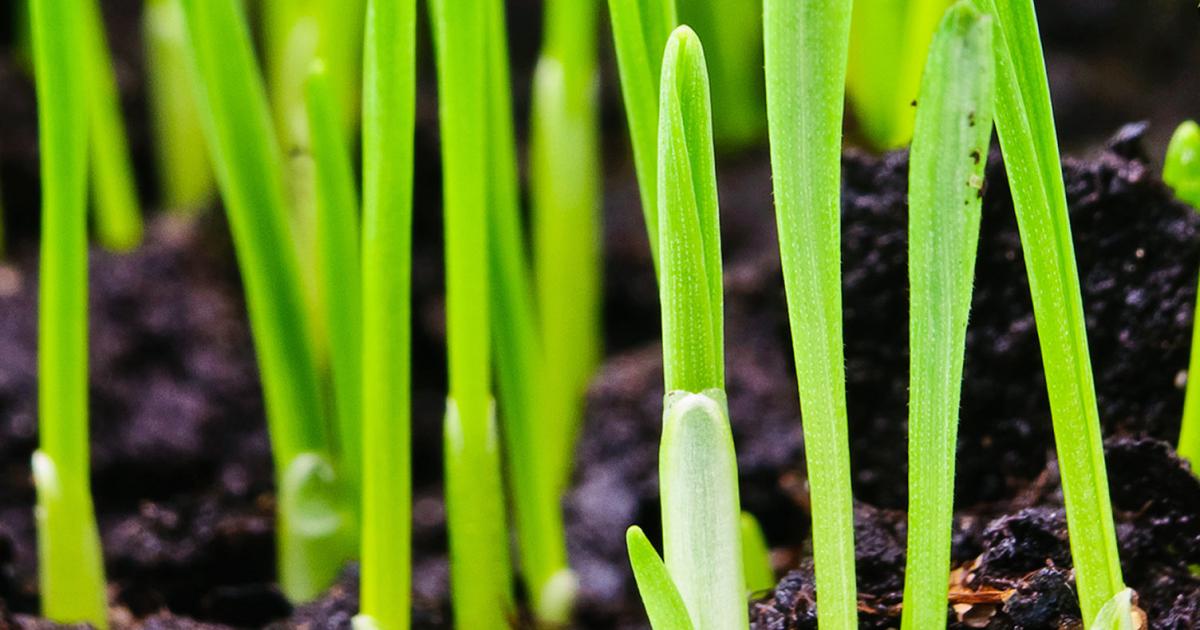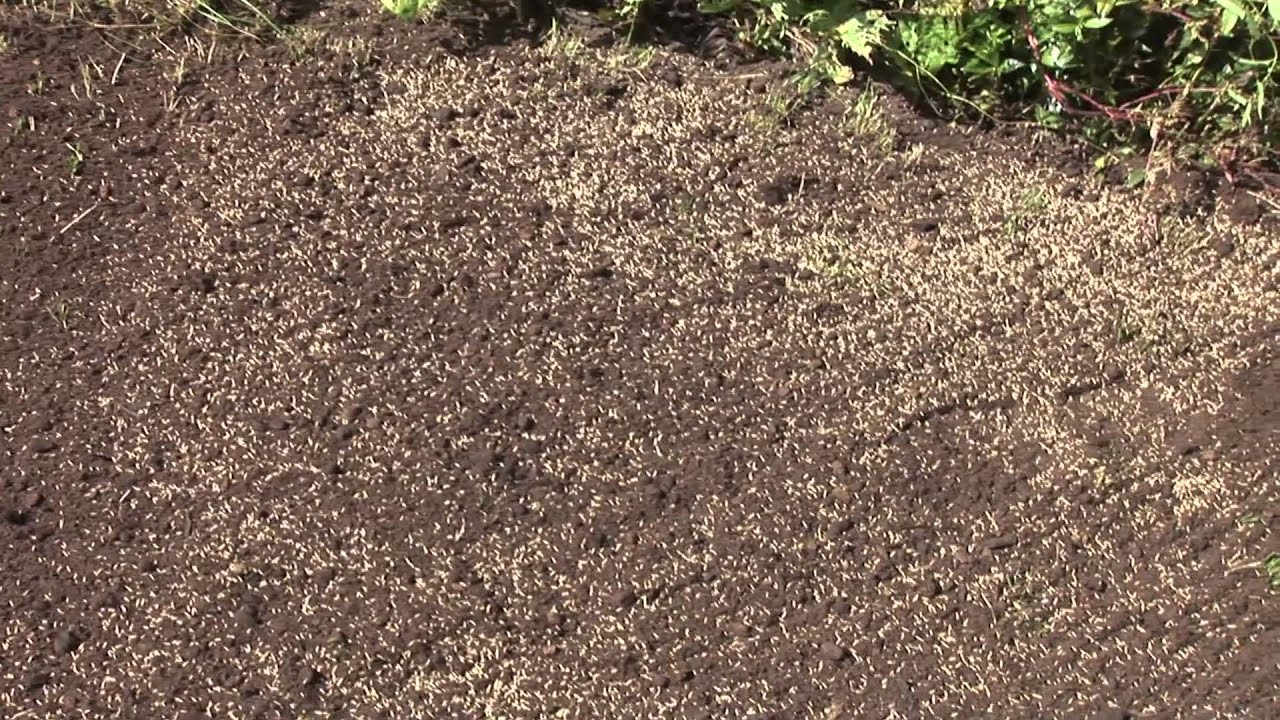When to Sow Grass Seed in the UK: A Season-by-Season Breakdown sets the stage for this informative guide, offering readers a comprehensive understanding of the best times to sow grass seed in the UK, taking into account the unique weather patterns and soil conditions throughout the year.
Choosing the right time to sow grass seed in the UK is crucial for achieving a lush, healthy lawn. Weather conditions play a significant role in grass seed germination and growth, influencing factors like soil temperature, moisture levels, and the risk of frost damage.
This guide provides a season-by-season breakdown, outlining the optimal time to sow grass seed in each season, along with tips for success and suitable grass seed varieties.
Introduction
Choosing the optimal time to sow grass seed in the UK is crucial for achieving a lush, healthy lawn. The success of your lawn depends heavily on the weather conditions during germination and growth. Understanding the seasonal nuances of the UK climate is essential for maximizing your chances of a thriving lawn.
Impact of Weather Conditions
Weather conditions play a pivotal role in the germination and growth of grass seed. The ideal temperature for germination is between 10°C and 20°C, with consistent moisture being equally important.
- Temperature:Cool, damp conditions are ideal for grass seed germination. Temperatures that are too high can lead to the seed drying out and failing to germinate. Conversely, temperatures that are too low can slow down the germination process.
- Moisture:Consistent moisture is essential for grass seed germination. The seed needs to be kept moist, but not waterlogged. Too much water can suffocate the seeds and prevent them from germinating.
- Sunlight:Most grass varieties require at least 6 hours of sunlight per day for optimal growth.
Spring (March
May)
May)
Spring is a popular time to sow grass seed in the UK, as the weather begins to warm up and there is more sunlight. This provides ideal conditions for germination and growth.
Optimal Soil Conditions for Spring Sowing, When to Sow Grass Seed in the UK: A Season-by-Season Breakdown
Sowing grass seed in spring requires specific soil conditions to ensure successful germination and establishment. The soil should be well-drained and have a temperature of at least 6°C (43°F). It is crucial to ensure the soil is moist but not waterlogged.
If the soil is too dry, the seeds will struggle to germinate. If it is too wet, the seeds may rot.
Suitable Grass Seed Varieties for Spring Sowing
The choice of grass seed variety depends on the desired look and feel of your lawn, as well as the specific growing conditions. Here are some popular varieties suitable for spring sowing:
Month |
Temperature Range (°C) |
Soil Condition |
Suitable Grass Seed Varieties |
|---|---|---|---|
March |
6-12 |
Moist but well-drained |
Fine Fescue, Perennial Ryegrass, Creeping Red Fescue |
April |
12-18 |
Moist but well-drained |
Perennial Ryegrass, Creeping Red Fescue, Meadow Fescue |
May |
18-24 |
Moist but well-drained |
Perennial Ryegrass, Meadow Fescue, Chewing Fescue |
Summer (June
August)
August)

Sowing grass seed in summer presents unique challenges due to the high temperatures and potential drought conditions. However, with careful planning and execution, successful summer seeding is achievable.
Summer Sowing Tips
Summer sowing requires specific strategies to overcome the challenges posed by high temperatures and potential drought. The following tips can increase your chances of success:
- Watering Frequency:Frequent and deep watering is crucial during summer, especially during dry spells. Aim for at least an inch of water per week, ensuring the water penetrates the soil to reach the grass seed. Avoid shallow watering, which can lead to surface roots and drought susceptibility.
- Drought-Tolerant Varieties:Choosing drought-tolerant grass seed varieties is essential for summer sowing. These varieties are genetically adapted to withstand dry conditions and require less frequent watering.
- Mulch Application:Mulching can help retain soil moisture and prevent excessive evaporation. Apply a layer of organic mulch, such as shredded bark or straw, to the seeded area.
Summer Sowing Calendar
This table Artikels key factors to consider when sowing grass seed in summer:
Month |
Temperature Range (°C) |
Soil Condition |
Suitable Grass Seed Varieties |
Watering Frequency |
Mulch Recommendations |
|---|---|---|---|---|---|
June |
15-25 |
Warm and well-drained |
Fine Fescue, Perennial Ryegrass, Creeping Red Fescue |
1-2 times per day |
Shredded bark or straw |
July |
20-30 |
Warm and moist |
Kentucky Bluegrass, Tall Fescue, Red Fescue |
1-2 times per day |
Shredded bark or straw |
August |
15-25 |
Warm and well-drained |
Fine Fescue, Perennial Ryegrass, Creeping Red Fescue |
1-2 times per day |
Shredded bark or straw |
Autumn (September
Knowing the best time to sow grass seed in the UK is crucial for a lush, healthy lawn. Spring and autumn are generally considered the ideal seasons, but the specific timing depends on the region and weather conditions. While you’re planning your gardening tasks, you might also find yourself needing a substitute for bay leaves in your cooking.
If so, check out The Top Substitutes for Bay Leaves to Use in Your Cooking for some flavorful alternatives. Once your lawn is established, you’ll have a beautiful backdrop for your culinary creations.
November)
Autumn is often considered the ideal time to sow grass seed in the UK, offering a balance of favorable conditions for successful germination and establishment. The cooler temperatures and increased rainfall during this season provide an optimal environment for grass seeds to thrive.
Ideal Soil Conditions for Autumn Sowing
The success of autumn sowing hinges on having the right soil conditions. Ideally, the soil should be moist but not waterlogged, with a temperature that is cool but not freezing. This allows the seeds to germinate and develop a strong root system before winter sets in.
Understanding the best time to sow grass seed in the UK is crucial for a lush, healthy lawn. A season-by-season breakdown helps you maximize your chances of success, ensuring optimal germination and growth. For a comprehensive guide on timing your grass seed sowing for a thriving lawn, check out The Essential Guide to Timing Your Grass Seed Sowing for a Thriving Lawn.
This resource offers valuable insights on factors like soil temperature, rainfall, and weed competition, helping you choose the perfect time to sow your seeds for a beautiful lawn in the UK.
Best Grass Seed Varieties for Autumn Sowing
Choosing the right grass seed varieties for autumn sowing is crucial for ensuring successful establishment. Look for varieties that are known for their ability to germinate and establish roots quickly, even in cooler temperatures. These varieties are typically a mix of perennial ryegrass, fescue, and meadow grasses.
Suitable Grass Seed Varieties for Autumn Sowing
Month |
Temperature Range (°C) |
Soil Condition |
Suitable Grass Seed Varieties |
|---|---|---|---|
September |
10-15 |
Moist but not waterlogged |
Perennial ryegrass, fescue, meadow grasses |
October |
5-10 |
Moist but not waterlogged |
Perennial ryegrass, fescue, meadow grasses |
November |
0-5 |
Moist but not waterlogged |
Perennial ryegrass, fescue, meadow grasses |
Winter (December
February)
February)
Sowing grass seed during the winter months in the UK presents a unique set of challenges. The cold temperatures and frost can hinder seed germination and establishment. However, with careful planning and appropriate techniques, winter sowing can be successful.
Protecting Newly Sown Grass Seed
Protecting newly sown grass seed from harsh weather conditions is crucial for its survival. The cold temperatures and frost can damage the delicate seedlings, preventing them from establishing a strong root system. A protective layer of mulch, such as straw or compost, can help insulate the soil and protect the seed from the elements.
Mulch also helps to retain moisture and prevent the soil from becoming too compacted. Alternatively, delaying sowing until spring may be a better option in areas with severe winters. This allows the soil to warm up and the seedlings to establish themselves in more favorable conditions.
Recommendations for Winter Sowing
Month |
Temperature Range (°C) |
Soil Condition |
Recommended Practices for Winter Sowing |
|---|---|---|---|
December |
0-5 |
Moist, but not waterlogged |
|
January |
-5-0 |
Frozen or very cold |
|
February |
0-5 |
Moist, but not waterlogged |
|
Conclusion

Choosing the ideal time to sow grass seed in the UK depends on a combination of factors. Understanding these factors will help you achieve a lush, healthy lawn.
Key Factors to Consider
The best time to sow grass seed is during the spring or autumn when the weather is mild and there is sufficient moisture for germination. However, it’s crucial to consider your local weather conditions and soil type.
- Weather:Aim for periods with moderate temperatures and consistent rainfall. Avoid sowing during extreme heat or frost, as this can hinder germination.
- Soil Type:Different soil types require varying moisture levels and drainage. Sandy soils tend to dry out quickly, while clay soils retain moisture. Ensure your soil is well-drained and has a good structure to support healthy grass growth.
- Grass Seed Type:Choose grass seed varieties that are suitable for your local climate and soil type. Some varieties are more tolerant of shade or drought, while others are better suited to heavy foot traffic.
Consulting Local Gardening Experts
For personalized advice on the best time to sow grass seed in your specific location, consult with local gardening experts. They can provide valuable insights based on your local climate, soil conditions, and specific lawn needs.
Final Thoughts

By understanding the optimal sowing times and adapting your approach to the specific challenges of each season, you can increase your chances of achieving a thriving lawn. Remember to consult with local gardening experts for personalized advice tailored to your specific location and soil type.
With careful planning and a little know-how, you can enjoy a lush, green lawn all year round.
Detailed FAQs: When To Sow Grass Seed In The UK: A Season-by-Season Breakdown
What is the best time to sow grass seed in the UK?
The best time to sow grass seed in the UK is generally in spring (March-May) or autumn (September-November) when temperatures are mild and rainfall is more frequent.
What are the challenges of sowing grass seed in summer?
Summer sowing can be challenging due to high temperatures, potential drought, and increased weed competition. However, with careful watering and the selection of drought-tolerant grass seed varieties, successful summer sowing is possible.
What are the advantages of sowing grass seed in autumn?
Autumn sowing offers cooler temperatures, increased rainfall, and a longer period for grass seed to establish roots before winter. This can lead to a healthier, more resilient lawn.
What should I do if I want to sow grass seed in winter?
Winter sowing can be challenging due to cold temperatures and frost. It’s best to delay sowing until spring or protect newly sown grass seed with a layer of mulch.
